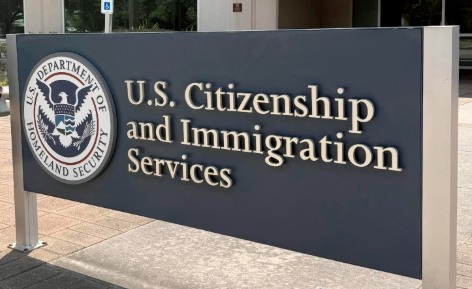
When a U.S. petitioner dies, the beneficiary’s immigration route can suddenly collapse. The law automatically revokes the immigrant petition at the petitioner’s death, stopping a pending case or wiping out an approved one. That sudden revocation throws beneficiaries into uncertainty, risking family separation and the loss of critical immigration benefits. The law is severe, but the story doesn’t always end there.
Let me tell you a story. I attended a concert and was lucky enough to be seated in the front row. It was a full house. After the show, it’s common for a few people to approach me with quick questions. One question, however, stayed with me and kept me thinking on the drive home.
The lady asked, “Attorney, may pag‑asa pa ba yung petition ng tatay ko sa kapatid ko? Kasi namatay na yung tatay ko. Pero namatay siya after ma‑approved yung petition sa kapatid ko.” Translation: “Attorney, is there still hope for my father’s petition for my sibling? My father has passed away, but he died after my sibling’s petition was approved.”
I gave the same measured reply any attorney would.
It depends.
Once, if a petitioner died while a petition was still pending, the case typically stopped there. However, beneficiaries may qualify for relief through INA 204(l) reinstatement or humanitarian reinstatement.

INA 204(l) Reinstatement
In 2009, the Congress enacted INA 204(l), which gives certain beneficiaries a second chance to obtain immigration benefits through a deceased qualifying relative.
Under INA 204(l), USCIS may approve an adjustment application or specified immigrant petitions adjudicated on or after October 28, 2009, when three conditions are met. First, the applicant was residing in the United States when the qualifying relative died; second, the applicant still resides in the United States on the date USCIS decides the pending application; and third, the applicant falls into one of the qualifying beneficiary categories.
INA 204(l) also preserves priority dates in appropriate cases. If the petitioner died while the petition was pending or after approval, a qualified substitute sponsor – a U.S. citizen or lawful permanent resident (for example, a family member) – can step in, file the required paperwork, and seek to retain the original priority date, provided the beneficiary still meets the petition’s eligibility criteria.
Humanitarian Reinstatement
Humanitarian reinstatement gives USCIS the authority to revive an approved Form I‑130 when the automatic revocation caused by a petitioner’s death would produce severe hardship or when exceptional humanitarian circumstances demand mercy. Think of it as an emergency lifeline. It’s not automatic, and it’s not for every case. USCIS uses discretion, which means weighing the human impact alongside the legal factors, and will grant reinstatement only in narrowly defined, compelling situations where restoring the petition clearly serves a humanitarian purpose. Because this relief is limited, strong, timely documentation and a persuasive presentation of hardship or unusual circumstances are essential to make the lifeline hold.
A substitute sponsor must step forward to support the request. The sponsor must be at least 18 years old and must be a U.S. citizen, U.S. national, or lawful permanent resident. The sponsor also must be a qualifying relative, for example, a spouse, parent, parent‑in‑law, sibling, child, son‑ or daughter‑in‑law, sister‑ or brother‑in‑law, grandparent, grandchild, or legal guardian.
Who can request humanitarian reinstatement
Only the principal beneficiary named on an approved Form I‑130 may file a request for humanitarian reinstatement after the petitioner’s death. Derivative beneficiaries such as spouses or children who were included on the original petition, do not have standing to file for reinstatement independently. However, if USCIS grants humanitarian reinstatement to the principal beneficiary, eligible derivative beneficiaries listed on that approved petition can benefit from the reinstatement as well and continue to pursue their immigration process under the restored petition.
Practically, this means the principal beneficiary must take the lead. This include preparation and submission of the humanitarian reinstatement request. Next, gather the required evidence. Then, secure a qualified substitute sponsor if a Form I‑864 Affidavit of Support is necessary. Derivatives should remain prepared to provide supporting documents (birth certificates, marriage certificates, identity documents) and any evidence showing their eligibility. If the principal beneficiary’s request succeeds, USCIS will typically extend relief to those derivative beneficiaries who still meet the qualifying requirements, preserving family unity to the extent allowed by the restored petition.
Timing and Documentation
Timing and documentation matter. The petitioner’s death must have occurred while the petition was pending or after approval. The substitute sponsor must qualify and provide evidence of the relationship or qualifying basis, the petitioner’s death (typically a death certificate), the beneficiary’s continued eligibility under the original petition, and any humanitarian or hardship factors that support reinstatement. Acting quickly and assembling a clear, persuasive file increases the likelihood of relief.

